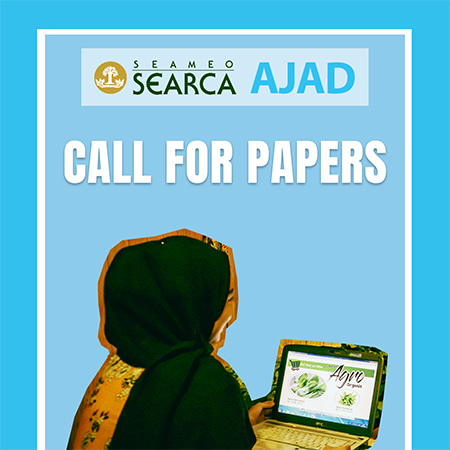- Paperback 1908-6164
- e-ISSN 2599-3895
Eight mangrove forest stands with a total of 473.52 hectares (ha), and 105.38 ha of fishponds were surveyed in Ticao Island, Masbate, Philippines in 2010 and 2011 to determine areas for rehabilitation. The stands varied from a very small (0.9 ha) monospecific stand in Barangay Sawang, Batuan to large (244.72 ha) and diverse stands like the Bongsanglay Natural Park, Batuan.
Species composition is diverse, consisting of 23 species of true mangroves and 24 species of mangrove associates. Avicennia marina and Nypa fruticans, were the most common, occurring in all sites surveyed.
The rarest were Pemphis acidula, Aegiceras floridum, and Scyphiphora hydrophyllacea, all of which were found only in the Bongsanglay Natural Park, Batuan. The highest species number was obtained in Sitio Baladingan, Barangay Famosa, Monreal (19) while the lowest was in Barangay Sawang, Batuan (8). Three species, Ceriops decandra, Aegiceras floridum, and Sonneratia ovata, are listed in the International Union for the Conservation of Nature (IUCN 2010) Red List as globally near threatened, while another two species, Avicennia lanata Ridley and Intsia bijuga, are listed as vulnerable.
The density of mature trees ranged from 600 stems per hectare (ha) in Barangay Santa Rosa, San Jacinto to 6,557 stems per ha in Sitio Baladingan, Barangay Famosa, Monreal. The high variation may be due to the patchiness of the species within the forest. In terms of basal area (BA), Sawang, although having one of the lowest tree densities, had the highest BA (199.69 per square meter [m2] per ha) contributed mostly by very old Sonneratia alba with circumference at breast height ranging from 88 to 189 centimeters (cm).
Based on tree density, Sawang and Sta. Rosa both obtained the highest dominance index (C) of 1.0 and consequently the lowest species diversity index (H′) of zero while Pandan obtained the lowest C of 0.08, and consequently the highest H′ of 5.23. In terms of species importance, S. alba in Sawang and A. marina in Sta. Rosa obtained the highest values of 300. This is because the Sawang stand was very small (0.9 ha) with S. alba being the dominant tree species in the area surveyed, while in Sta. Rosa, 2 Mangrove Rehabilitation in Ticao Island, Masbate, Philippines although the stand was bigger, the area surveyed was also dominated by A. marina. Rhizophora mucronata had the highest importance values in Sitio Pandan and Barangay Poblacion, Monreal; Barangay Burgos, San Jacinto, and Bongsanglay Natural Park, Batuan; Rhizophora apiculata in Barangay Famosa, Monreal and Barangays Tacdugan and Washington, San Jacinto; and Xylocarpus granatum in Sitio Baladingan, Barangay Famosa, Monreal and Barangay Daplian, San Fernando.
Seedlings and saplings of three species were found the whole year round: Ceriops tagal, R. apiculata, and Rhizophora mucronata. The highest density of seedlings and saplings occurred in Daplian contributed mostly by Ceriops decandra. As in mature trees, the variation between plots was high due to the patchiness of the species within the forest. Also, the occurrence of seedlings is very much dependent on the time of sampling as flowering and fruiting is seasonal. The results indicate that the mangrove forests of Daplian, Tacdugan, and Famosa have natural regeneration and may just need species enhancement planting. Sawang and Sta. Rosa, meanwhile, need to be rehabilitated.
In terms of secondary productivity, three species of mollusk, Geloina erosa Sol., Lutraria sp., and Vasticardium sp., and one species of crustacean, Scylla serrata, were commonly gleaned and harvested for food.
Two mangrove nurseries were established: one in Ticao Island (Baladingan) and the other in Negros Island (Dumaguete City). In both nurseries, 19,167 seeds/propagules were germinated consisting of 13 uncommon species, half of which were directly potted. Survival rates of six species monitored were very high, ranging from 100 percent for X. granatum to 80–85 percent for C. tagal, except for S. ovata and S. caseolaris, which have zero germination. The low number of propagules is due to (1) seasonality in fruiting, (2) limited mother trees of rare species like Kandelia candel, (3) unusually low propagule yield, and (4) inclement weather conditions.
Download for free
PDF format in this language: English


